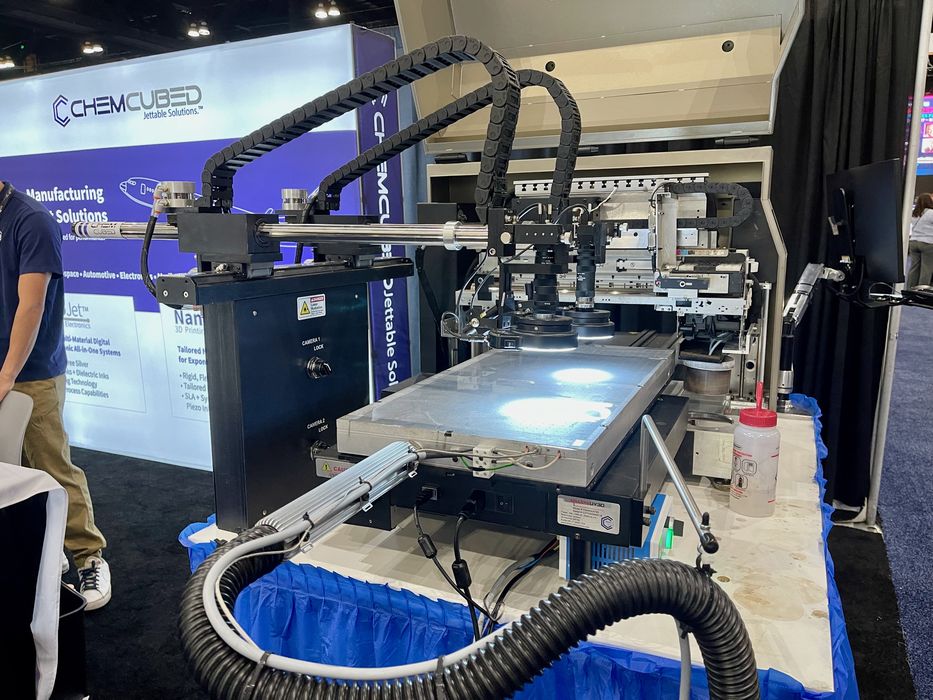
Chemcubed is one of the few companies producing Additive Manufactured Electronics (AME) 3D printers.
AME is the new way of producing printed circuit boards (PCBs). Traditionally PCBs have been made with a combination of pre-made blanks, CNC machines, laser engraving and other common tools. While that’s been wildly successful over decades, the new way is much more flexible: just print the circuit instead of cutting or etching it.
New York-based ChemCubed’s ElectroUV3D device is capable of producing PCBs on demand, as well as other electronic components.
The device uses an inkjet printhead that has 180 nozzles per inch, making high resolution prints possible. That’s quite important when printing electronic traces, as the small size enables more traces in a given area. ChemCubed reports a positioning accuracy of only 0.038mm.
The ElectroUV3D prints the traces on provided 2D substrates like Kapton or other typical PCB board materials.
The ElectroUV3D is able to achieve quite a bit of Z-height. According to the specifications, the machine can print up to 150mm, with optional extensions to 380mm tall.

The printing process involves both UV curing and sintering, depending on the material involved. They explain how they build a two-layer PCB:
“The multi-layer/multi-material printing process offers numerous advantages. It involves the sintering of silver conductive ink using a heated platen in-line, followed by the UV curing of dielectric insulating ink with an LED lamp. This process allows for the addition of extra layers of each material as needed.”
ChemCubed’s printing process operates at a low temperature of only 80C, keeping energy requirements low.
It also can produce boards quite quickly. We were told that a three-layer PCB can be produced in about 20-30 minutes, depending on the details. That’s pretty quick, especially when compared to the older traditional methods that involve multiple steps.
Finally, the cost of the ElectroUV3D is said to approximately US$120K. That’s a big price, but consider that you eliminate the need for a couple of other machines that might normally be required to produce PCBs.
Via ChemCube
